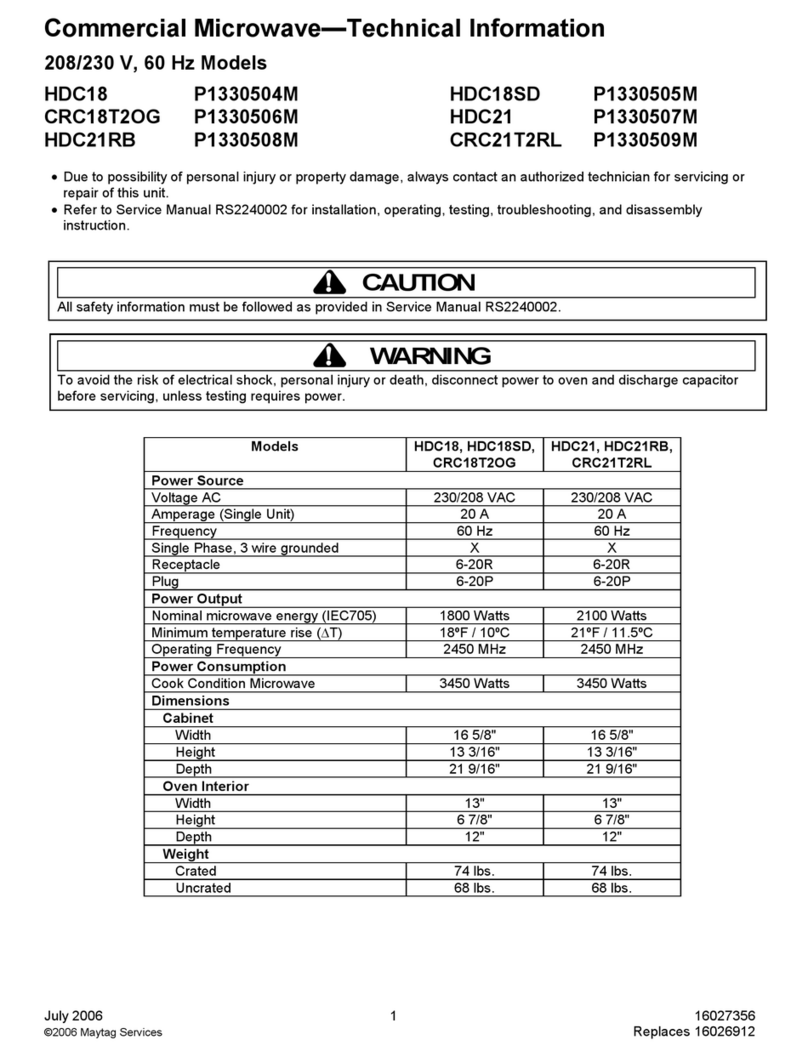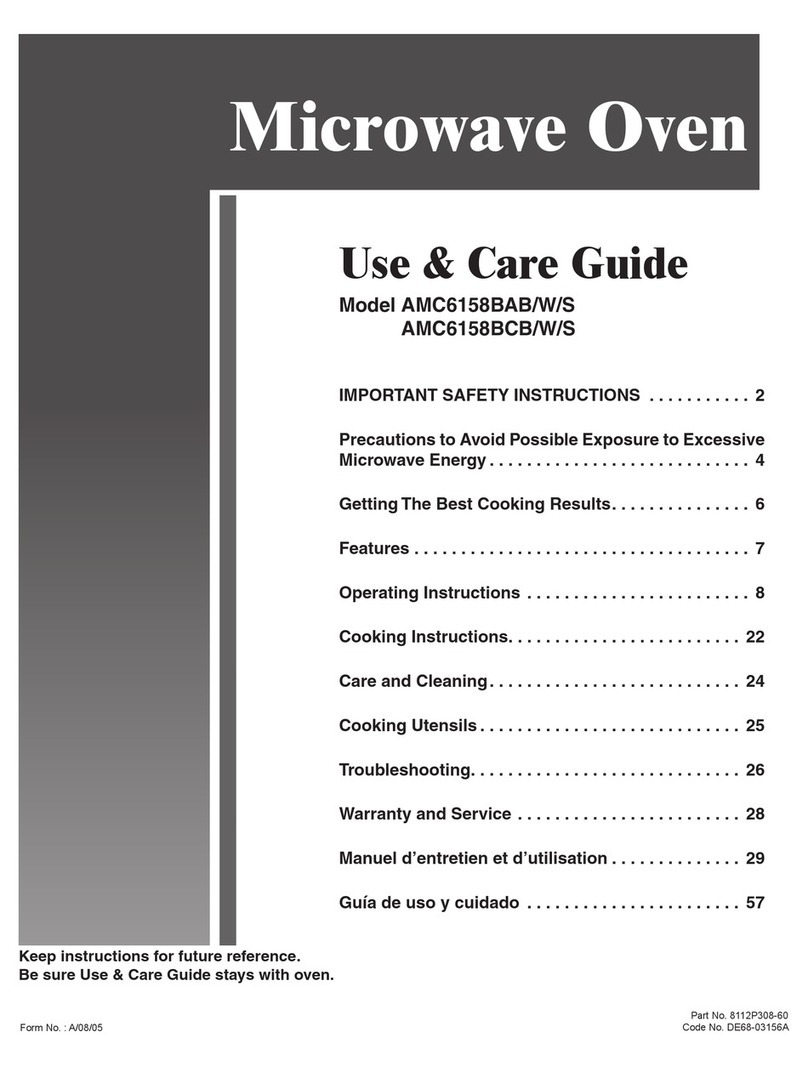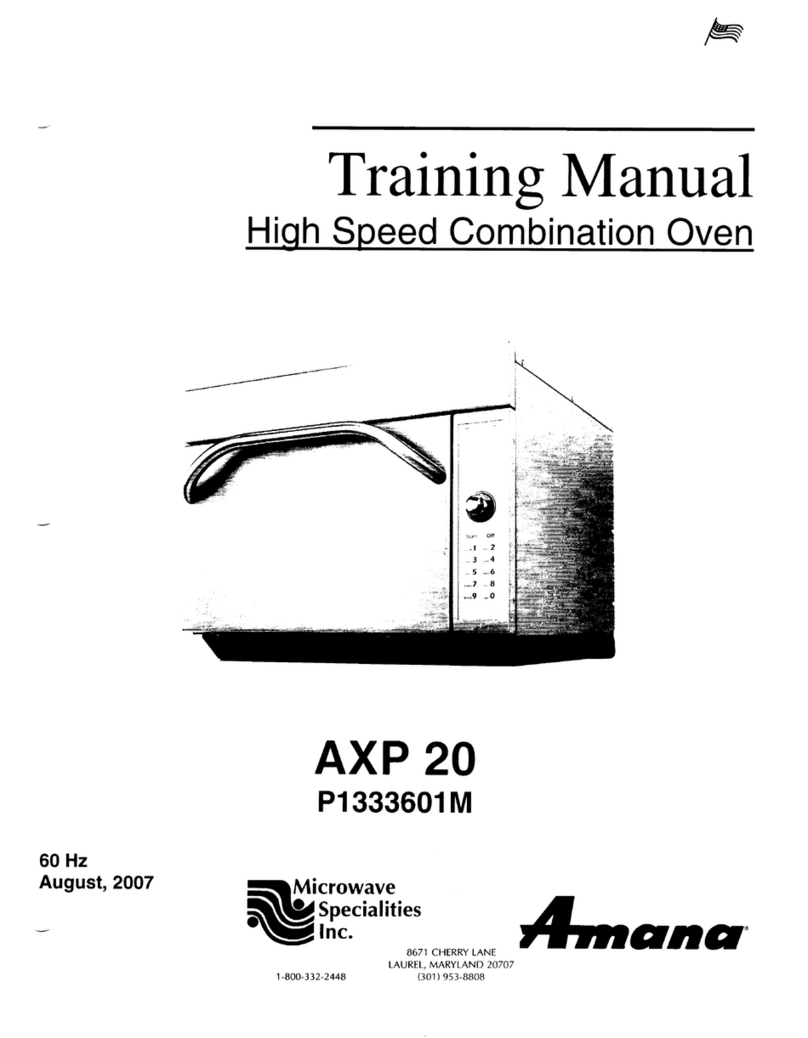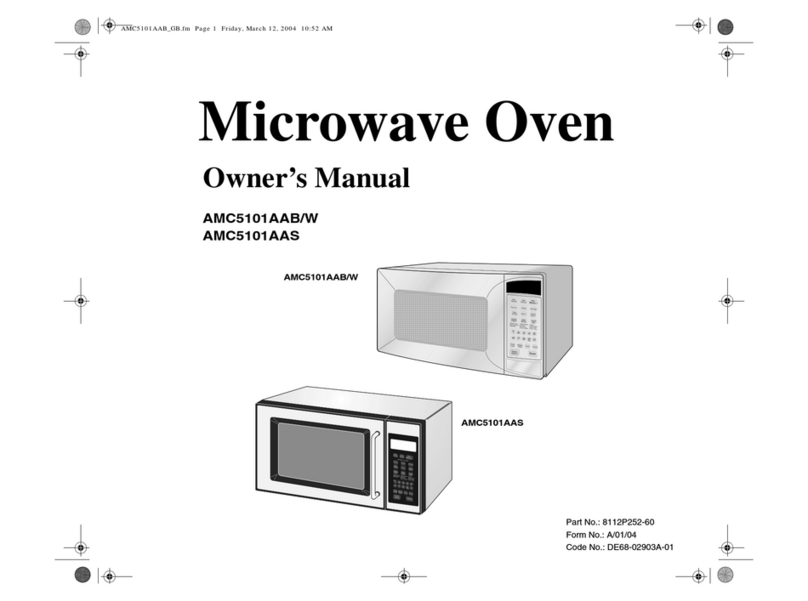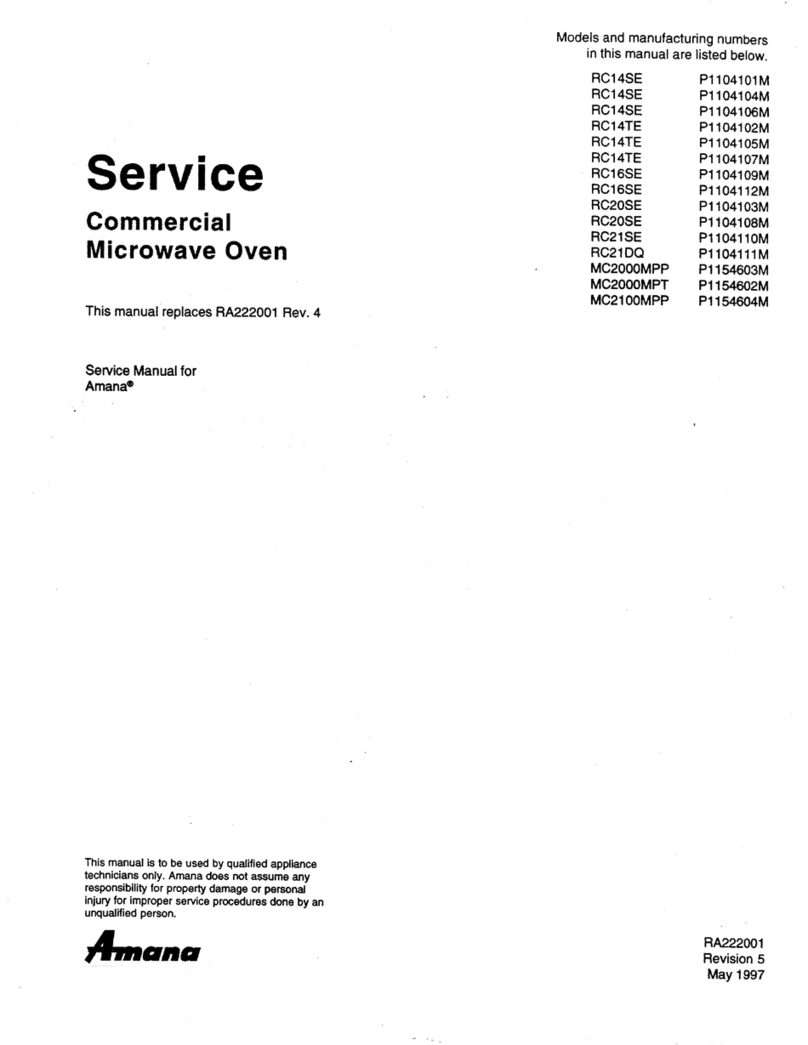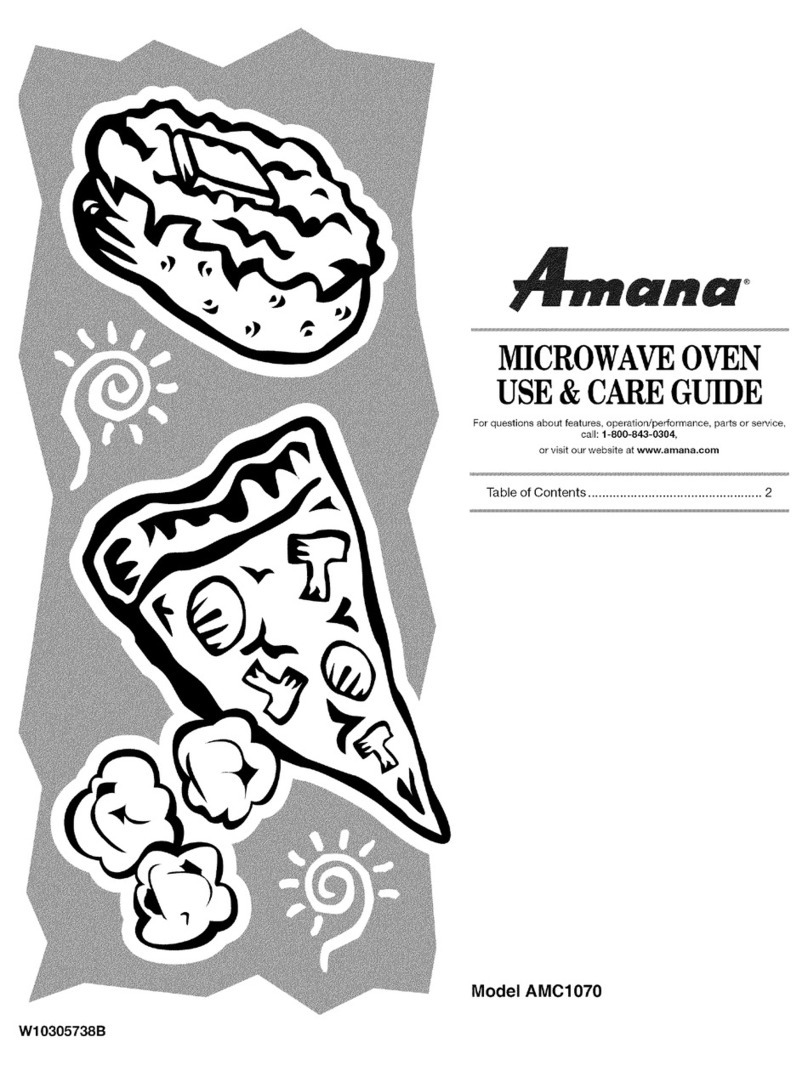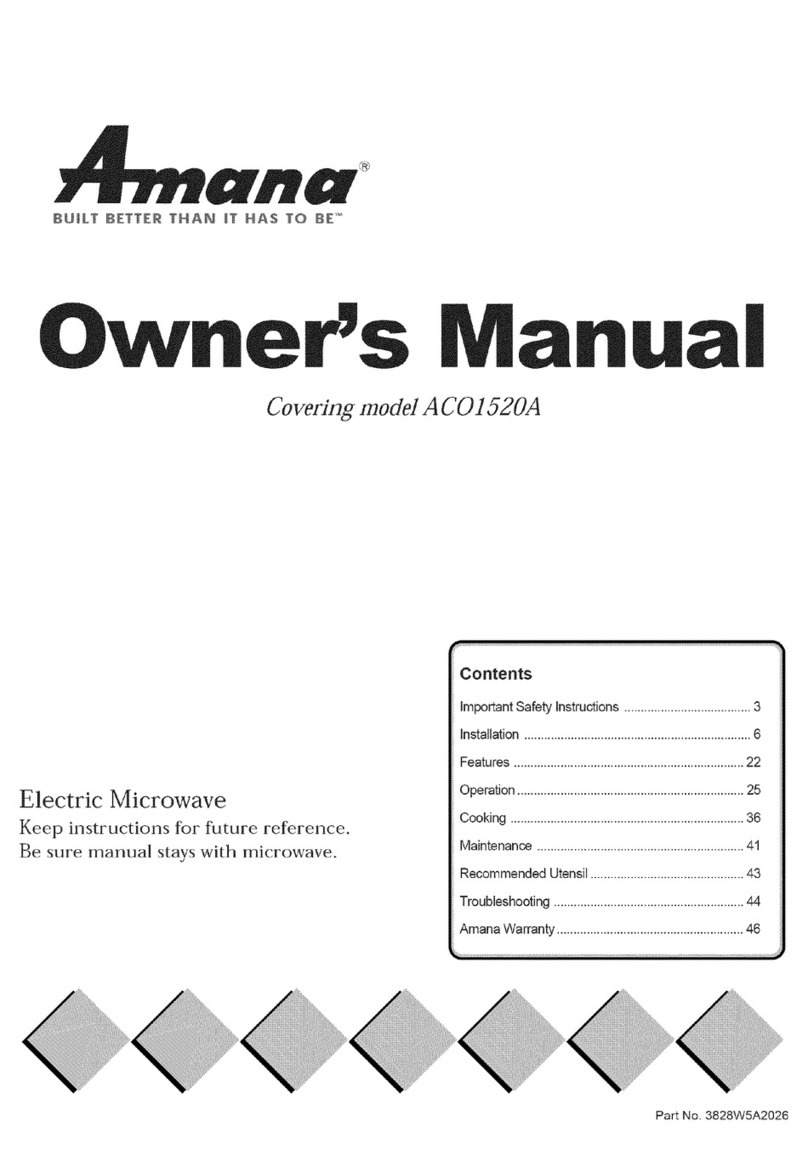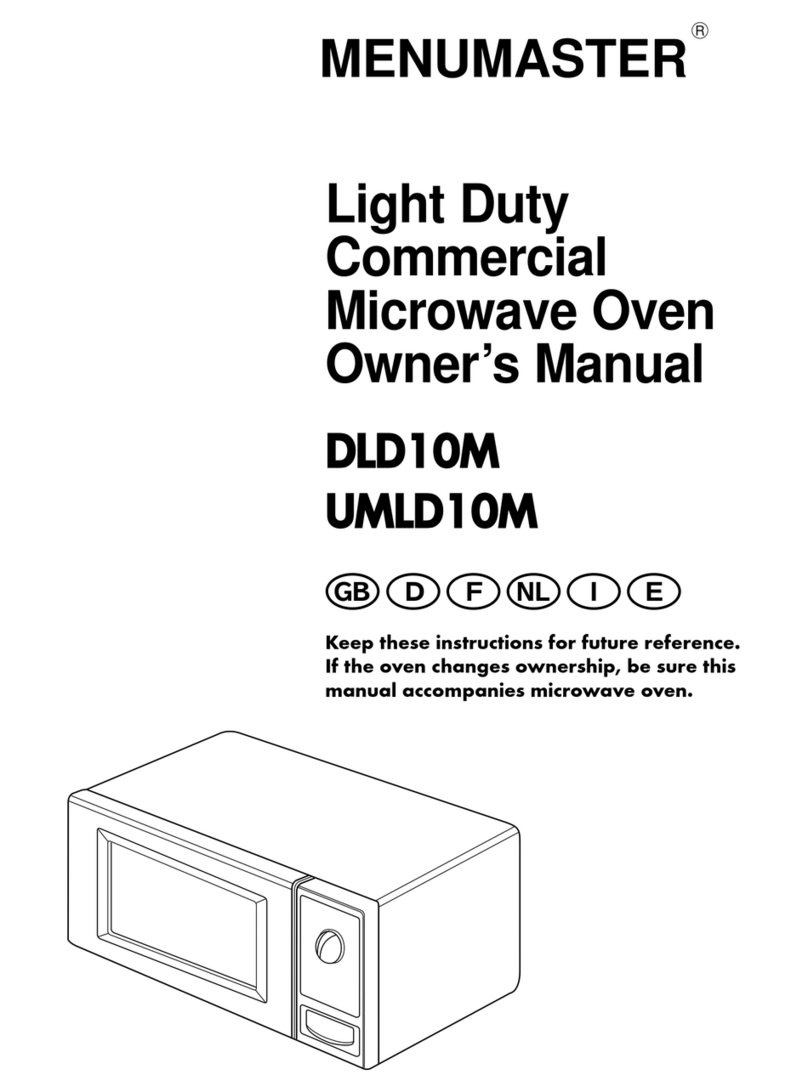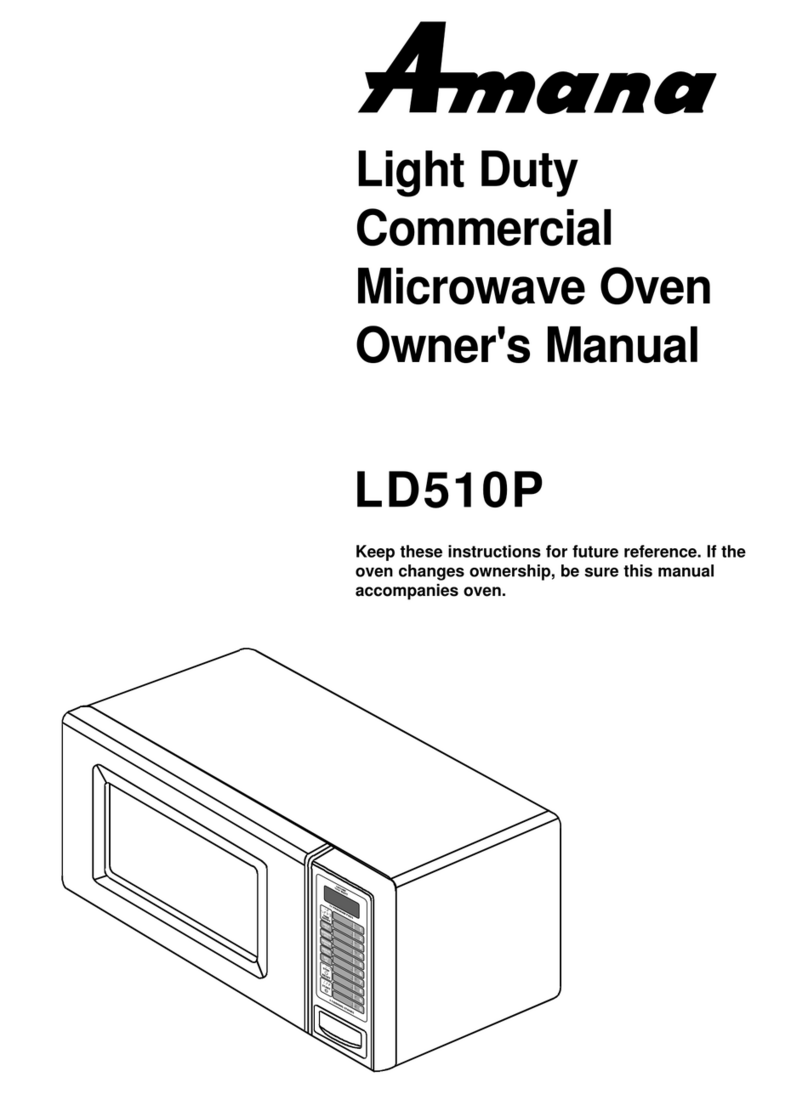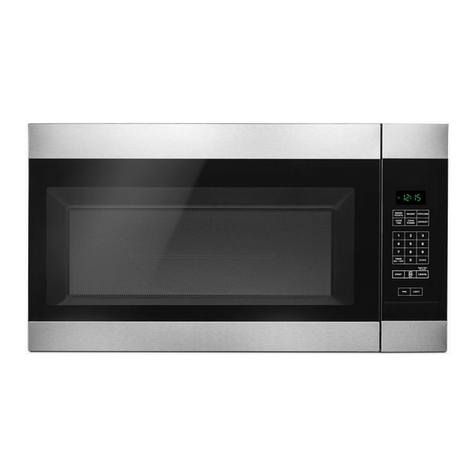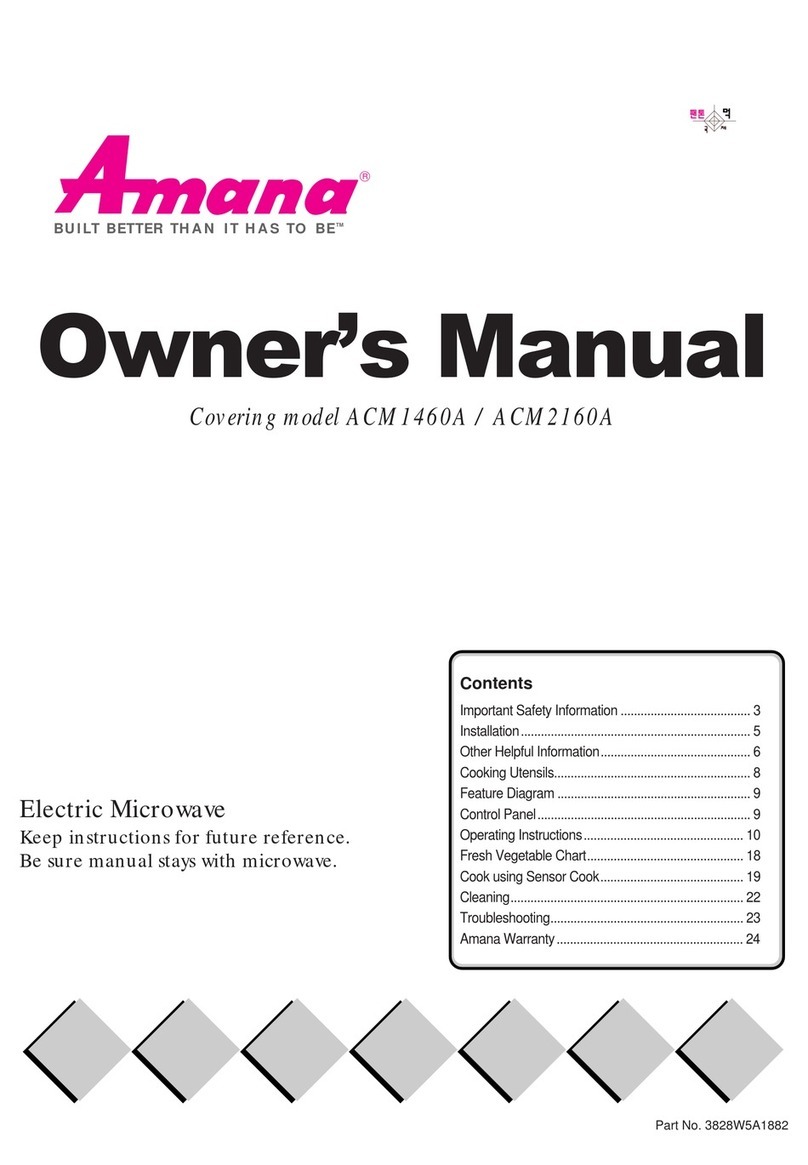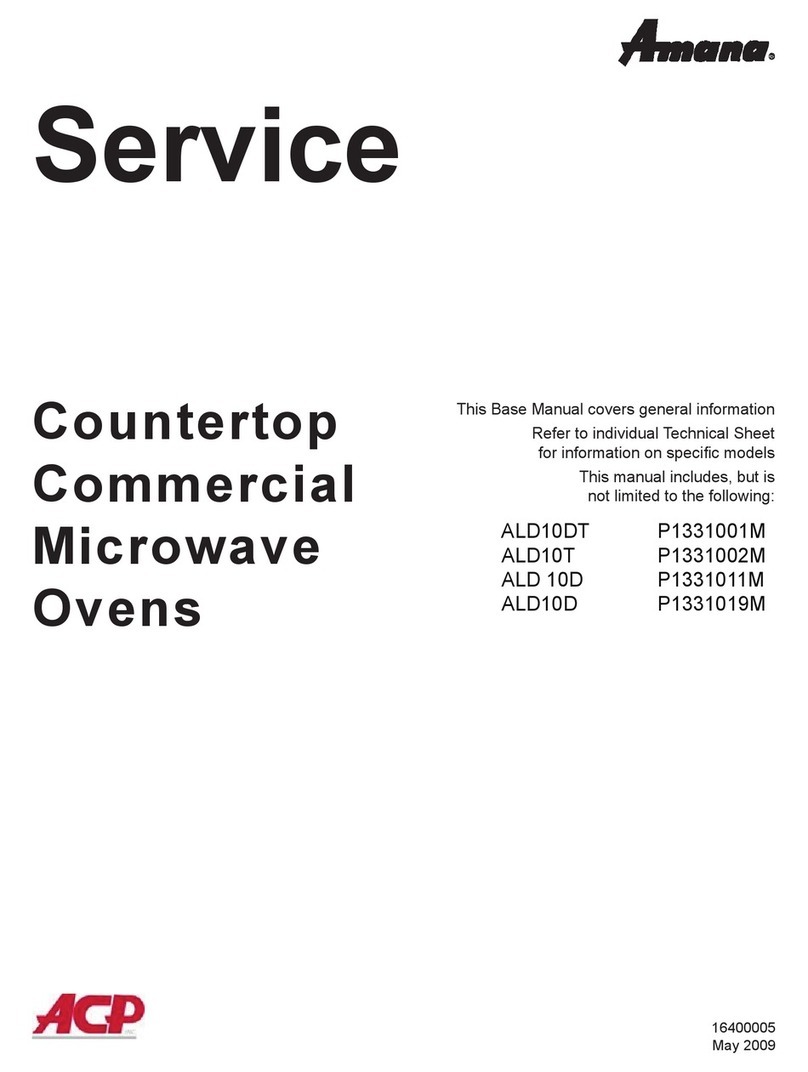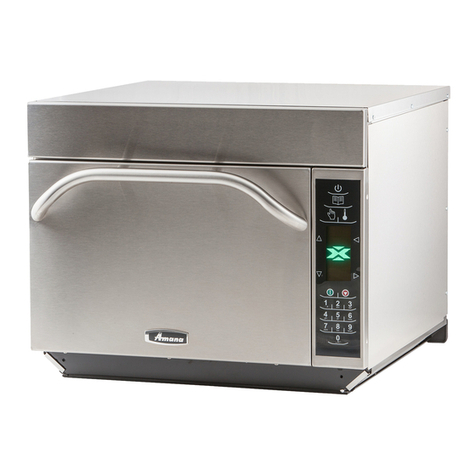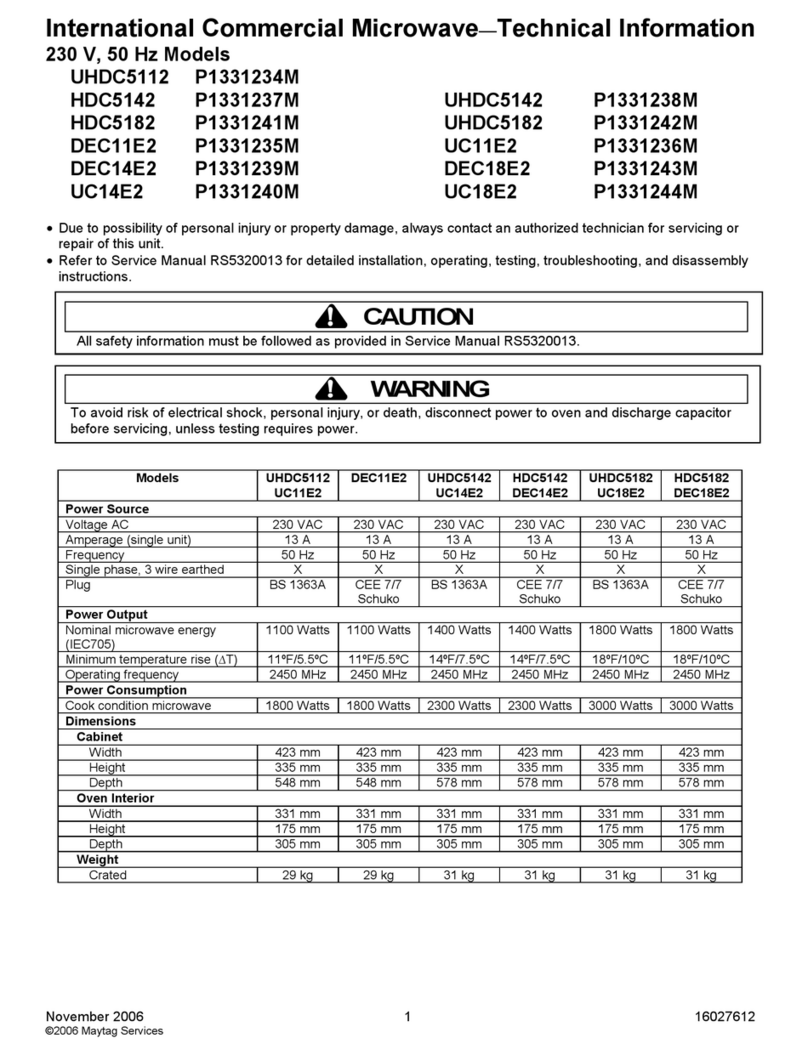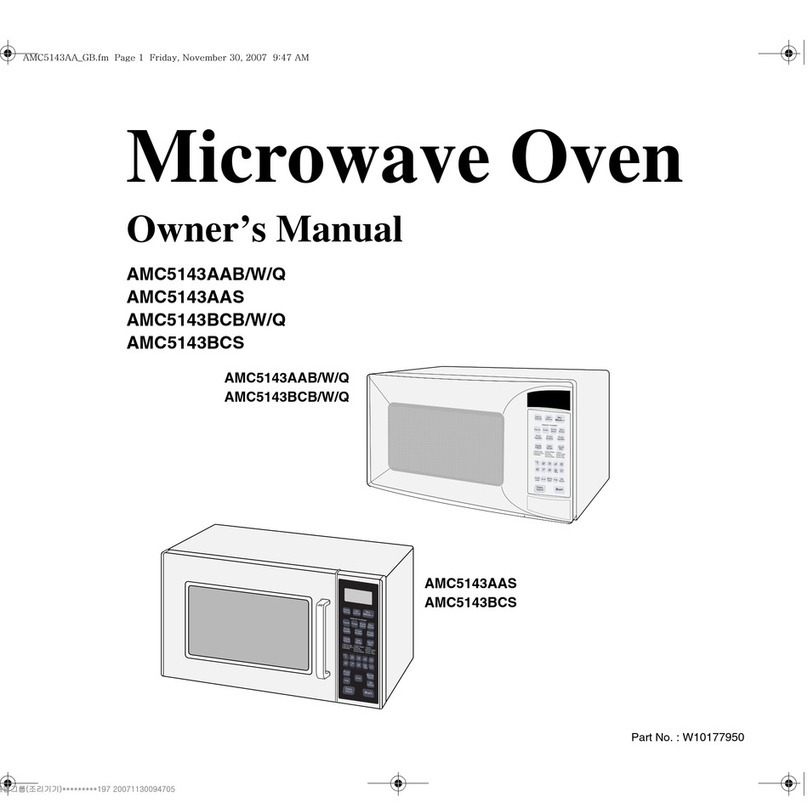
9
Thequantity orvolumeof a food can affecttheamountof
cooking time. As the volume of the food is increased, the
time required to cook or heat the item increases almost
proportionately. If twice the amount of food is placed in the
oven, it will take almost twice as long to cook. To deter-
minethetime for larger quantities, multiply the individual
servingtimebythe increased amount, then reduce the
total heating time by about 20%.
Thedensity offoods can greatly affect theamountof
cooking time. Porous foods, such as breads, cakes or
pastries, will heat much more quickly than dense meats
ofthesame size. Porous foods absorb microwaves
quicklythroughout.Meatsabsorb microwaves mostly at
the exterior surface, and the interior is heated by conduc-
tion, increasing the cooking time. Meats can be cooked in
a sauce, if desired. Due to the moisture content, a sauce
will heat rapidly. The heat will transfer to the meat, so the
meat will heat faster due to heat by conduction as well as
bymicrowaves.
Thestarting temperature of foods affects the amountof
cookingtime.Eachtemperature degree that the food item
is to raise must be supplied with a definite amount of
energy. Lowerinitialstarting temperatures require more
energyand more timeto cook. Therefore,refrigerator
temperaturefoods require a longercookingtime than do
roomtemperaturefoods. Foods already slightly warm will
heatveryquickly in the oven.
Themoisture content offoodsaffects the amount of
cooking time. The higher the moisture content is in a food
the longer the amount of cooking time.
The fat and sugar content of foods affects the amount of
cookingtime.Foods containing high fat and sugar levels
heatveryquickly and may reach much higher tempera-
turesthan foods having lowfatand sugar levels. Foods
havinglower fatandsugar levelsrequire longer cooking
times.
Thearrangement offoodwithina microwave oven cavity
affects the way in which the food cooks. A “round”
arrangementisbest. Use round utensils whenever
possible. Also, arrange foods such as baked potatoes in
a circle, rather than in rows, for cooking. When only one
food item is being cooked, place it in the center of the
ovenglassshelfforcooking.
Manipulation of Foods
Sometimesrecipes suggest manipulating ormovingfood
duringcooking. Thereareseveral formsofmanipulation:
Stirring isrequiredless often in microwave cooking than
inconventional cooking. In conventionalcooking,you use
a spoon to move food up from the bottom of a pan to
evenlydistributetheheat. In microwave cooking, you still
stir to redistribute the heat within some foods, but you
need to stir from the outside of a dish toward the inside or
center. If a recipe states to stir once or twice during
cooking,stirat approximately even intervals. For ex-
ample, in a 12-minute cooking period, if a recipe states to
stir twice, stir after 4 minutes of cooking and again, after 8
minutes of cooking. However, it is not necessary to be
precise. Stir only when necessary. When using lower
power levels or settings, less stirring is required. Some
examplesoffoods which may require stirring arepud-
dings, some casseroles, some sauces, some soups, and
some egg dishes. Some foods can’t be stirred. These
foodsare rearrangedor turned.
Some foods can’t be stirred and should be repositioned
or rearranged during cooking. Some examples include
baked potatoes, cupcakes (in custard cups), and
chickenpieces.Rearranging allows for more even
cookingoffoods.Foodswhicharecooked, covered or
whicharecookedusinglowerpowerlevels, usually
requirelittle rearranging.
Thereareactually two types of turning.Turningisdone
whenfoodscannotbe stirred. Foods which are cooked,
coveredor which are cookedatlower power levelsusually
requirelittle turning.
Turning foods over: Turning foodsoveris done to
distribute heat. Meat and poultry are two types of foods
whichare sometimes “turned over.” Examples include
roasts, turkeys and whole chickens. Small meat items
such as poultry pieces may need to be turned over when
in casseroles, or when in a browning skillet.
